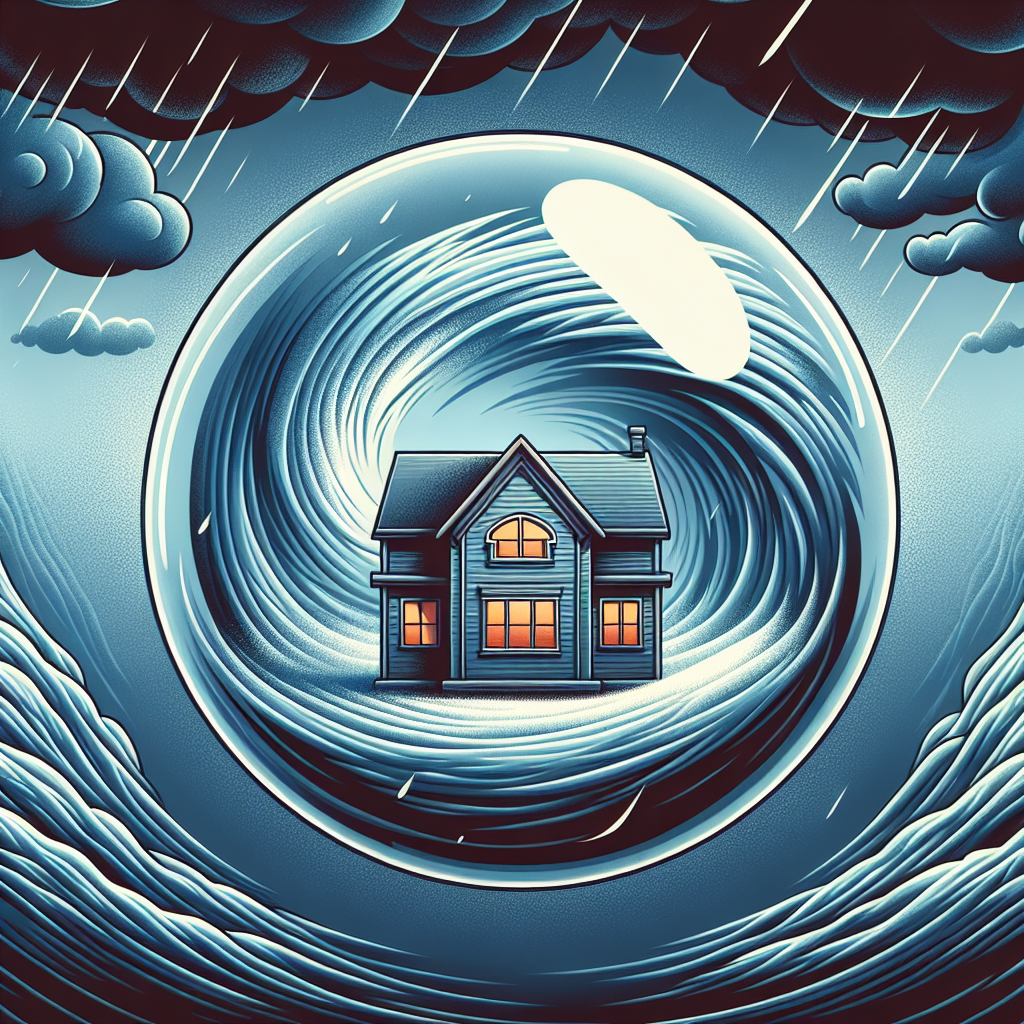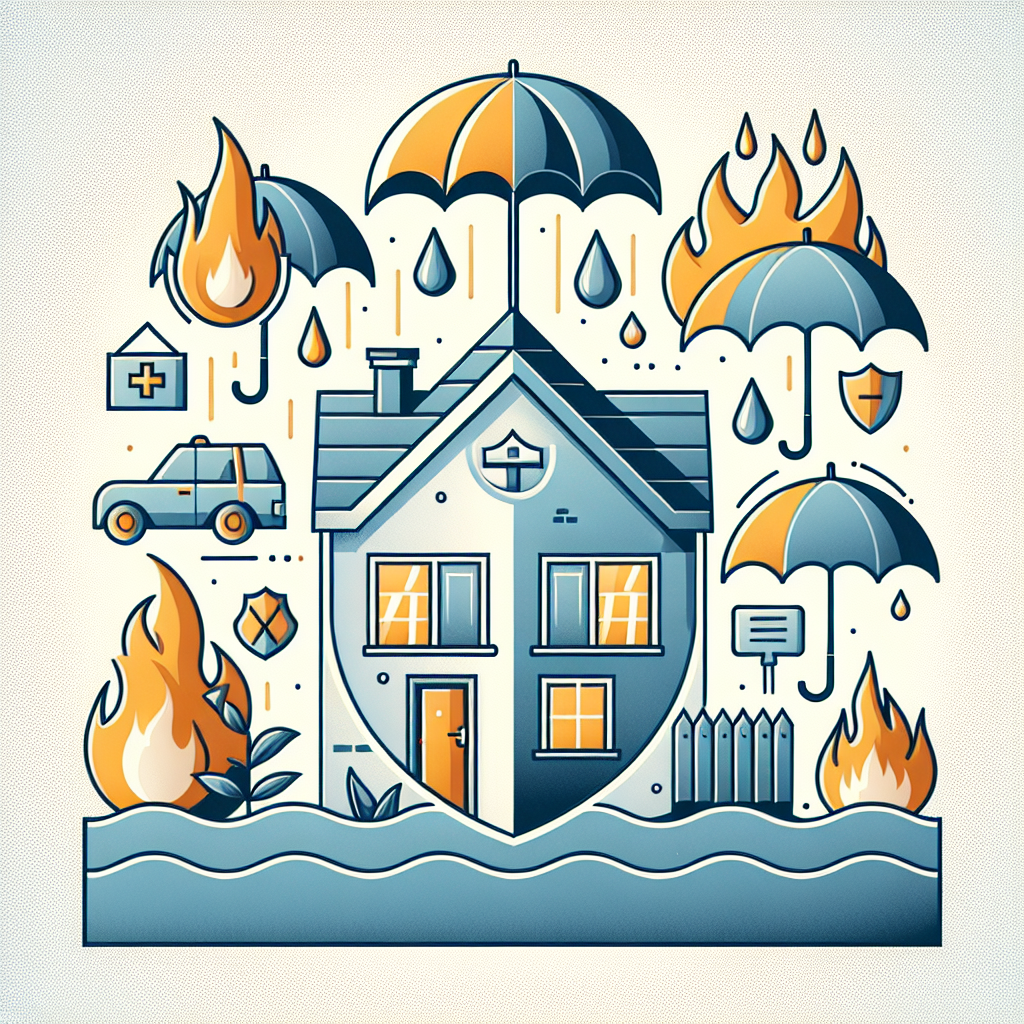Filed under Home Insurance on
Typical Home Insurance Coverages Explained

Why homeowners insurance matters more than ever
Homes are more than addresses; they are financial anchors and the backdrop of daily life. Yet storms intensify, repair costs keep climbing, and lawsuits can upend savings overnight. In this guide, Typical Home Insurance Coverages Explained becomes more than a title—it is a practical blueprint so you know what your policy does, what it does not do, and how to tailor it before a claim ever happens.
Insurers price risk dynamically. Building materials cost more than they did even a few years ago, local labor is in short supply in some regions, and catastrophe losses have grown. Industry reports from national regulators and insurance trade groups consistently show upward pressure on premiums since 2020, with many states seeing double-digit rate filings in 2023 and 2024. Against that backdrop, clarity about coverage is a competitive advantage for any policyholder.
Typical Home Insurance Coverages Explained: the core protections
Most standard homeowners policies (often an HO-3 form for single-family homes) include six core parts. Think of them as a safety net woven from complementary threads—property, living costs, and liability.
1) Dwelling coverage
This protects the structure of your home—walls, roof, floors, built-in cabinetry—against covered perils such as fire, windstorm, or theft. Coverage is based on the cost to rebuild, not market value. Insurers use replacement cost estimators that consider square footage, construction type, and features like custom trim. If inflation or renovations make those estimates outdated, you risk underinsurance. Many carriers offer extended or guaranteed replacement cost to add a cushion if rebuilding overruns the limit.
2) Other structures
Detached garages, fences, sheds, and mailboxes fall here. The limit is usually a percentage of the dwelling amount, often around 10%. If you have an elaborate studio or large barn, ask for a higher limit or a specific endorsement.
3) Personal property
Furniture, electronics, clothing, and most belongings are covered whether they are at home or temporarily away, like in your car or a hotel. Two valuation approaches apply: actual cash value (depreciation deducted) or replacement cost (new-for-old). Replacement cost typically costs more but pays better at claim time. High-value items—jewelry, fine art, collectibles—often have low sublimits for theft. Scheduling those items adds broader protection and higher limits.
4) Loss of use (additional living expenses)
If a covered event makes your home uninhabitable, this pays for temporary housing, meals, pet boarding, laundry, and other necessary costs above your normal spending. Limits are commonly tied to a percentage of the dwelling amount or a time period. Keep receipts; documentation accelerates reimbursement.
5) Personal liability
Liability coverage defends you and pays settlements if you are legally responsible for injuries or property damage to others. Examples include a guest slipping on stairs or your tree damaging a neighbor’s roof. Limits often start at $100,000, but many homeowners carry $300,000 to $500,000. Those with assets or higher risk exposures (pool, trampoline, frequent entertaining) often add a personal umbrella policy for extra protection and defense coverage above your home and auto limits.
6) Medical payments to others
This no-fault coverage pays for minor injuries to guests, often $1,000 to $5,000, regardless of liability. It is designed to handle small medical bills quickly and reduce disputes.
Covered perils versus exclusions
In any Typical Home Insurance Coverages Explained breakdown, the distinction between named perils and open perils matters. An HO-3 policy typically covers your dwelling on an open-perils basis—everything is covered unless excluded—while personal property is covered for named perils, such as fire, theft, or windstorm. Key exclusions include flood, earthquake, wear and tear, vermin, and intentional damage. Some windstorm or hail losses may carry separate deductibles in high-risk regions.
Why exclusions exist: insurance is designed for sudden, accidental loss, not predictable maintenance or gradual deterioration. If your roof is aging or plumbing is outdated, insurers expect routine upkeep. Failure to maintain can jeopardize claims.
Policy forms and how they differ
Beyond coverage parts, policy forms determine breadth of protection. While names vary slightly by insurer, these are common:
- HO-1: Basic named-perils coverage, rarely sold today.
- HO-2: Broad named-perils protection for dwelling and personal property.
- HO-3: Special form, open perils for the dwelling and named perils for personal property—today’s most common baseline.
- HO-4: Renters insurance for personal property and liability.
- HO-5: Comprehensive form with open-perils coverage for both dwelling and personal property and often higher sublimits.
- HO-6: Condo unit owners; covers interior finishes, personal property, and liability.
- HO-7: Mobile/manufactured homes with adaptations to the HO-3 approach.
- HO-8: Older or historic homes where replacement cost is hard to calculate; may settle at functional replacement cost.
If you have a newer home or extensive belongings, HO-5 can be worth the premium for broader coverage and fewer disputes over what is included. For older homes, HO-8 can prevent underpayment conflicts by clarifying how damaged materials are replaced.
Coverage limits, deductibles, and valuation methods
Three levers determine how your policy performs under stress: how much it pays, how claims are calculated, and what you pay out of pocket first.
- Limits: Set the dwelling limit based on rebuild cost, not market value. Review after renovations or major price shifts in labor and materials. For personal property, a percentage of dwelling is common, but schedules and endorsements may be needed for fine items.
- Deductibles: Choosing a higher deductible lowers annual premium, but make sure you could comfortably cover it in an emergency. Some policies use separate wind or hurricane deductibles expressed as a percentage of dwelling coverage.
- Valuation: Replacement cost coverage is preferable for both structure and contents. Actual cash value payouts reflect depreciation and can be disappointingly low on older roofs, appliances, or furniture.
Extended replacement cost, building code upgrades, and ordinance or law coverage help cover unexpected rebuild expenses, especially after widespread disasters when labor and material prices spike or when local codes require costlier construction methods.
Endorsements that fill common gaps
Even the best standard policy has blind spots. Strategic add-ons make Typical Home Insurance Coverages Explained actionable for your situation.
- Service line coverage: Pays to repair underground utilities you own, like water or sewer lines, often excluded in base policies.
- Equipment breakdown: Covers sudden failure of home systems and appliances due to mechanical or electrical breakdown, distinct from wear and tear.
- Sewer or sump backup: Covers water damage from back-ups, which are typically excluded under flood or standard water damage terms.
- Scheduled property: High-value jewelry, art, instruments, or collectibles can be itemized for agreed values and broader perils.
- Home business property or liability: Raises limits for business-related equipment or extends liability if clients visit your home.
- Green rebuild upgrades: Pays to replace with energy-efficient or sustainable materials after a covered loss.
- Short-term rental endorsement: If you list your home on booking platforms, specialized coverage may be required to avoid claim denials.
How claims work—and how to prepare
When something goes wrong, speed and documentation make a difference. Here is what a typical process looks like:
- Safety first: Secure the area, prevent further damage, and call emergency services if needed.
- Notify your insurer: Provide date, time, and a concise description of what happened. Early notice preserves evidence and triggers your duties under the policy.
- Document: Take photos and videos, save receipts, and create an inventory of damaged items with approximate prices and purchase dates.
- Mitigate: Make temporary repairs to prevent additional damage, such as tarping a roof or shutting off water. Keep receipts for reimbursement.
- Adjuster visit: Be present, share documentation, and ask about next steps, timelines, and coverage nuances (like depreciation holdback rules).
- Payment: Depending on your policy, you might receive an initial actual cash value payment, with replacement cost holdback released after you repair or replace.
Tip: Maintain a digital home inventory. Free apps and a simple folder of photos and serial numbers in cloud storage can cut settlement time dramatically.
Cost drivers and market trends
Premiums reflect risk and rebuilding costs. Several forces are shaping today’s market:
- Construction inflation: Material and labor costs remain elevated compared to pre-2020 norms. Even modest kitchen upgrades can push replacement cost higher than expected.
- Catastrophe frequency: Wildfire, severe convective storms, and hurricanes have driven larger insured losses. Some regions face capacity constraints, higher deductibles, or stricter underwriting.
- Litigation and social inflation: Higher legal costs and larger settlements increase liability claim severity, pressuring rates.
- Reinsurance pricing: When global reinsurers raise prices to primary insurers, consumers often feel the ripple effect.
- Credit and prior claim history: Many insurers use credit-based insurance scores and claims records to refine pricing.
Regulatory filings and analyses from the Insurance Information Institute and national regulators note persistent premium increases since 2020, with variation by state. In some coastal or wildfire-prone areas, carriers have tightened underwriting or reduced new business to manage concentration.
Ways to save without sacrificing protection
Smart buyers keep value high while trimming fat. Consider these approaches:
- Bundle home and auto: Multi-policy discounts are often the biggest single savings lever.
- Raise deductibles thoughtfully: Balance premium savings with your emergency fund comfort level.
- Harden your home: Roof upgrades, hail-resistant materials, water leak sensors, automatic shutoff valves, and monitored security can earn credits and reduce losses.
- Shop coverage quality, not just price: An HO-5 policy with higher sublimits and RCV for contents may prevent bigger out-of-pocket costs later.
- Update the insurer’s rebuild estimate: Provide details about renovations, roofing type, and finishes so the dwelling limit is accurate. Overstated limits can inflate premium; understated limits create painful gaps.
- Ask about membership or professional discounts: Teachers, nurses, military, and certain associations may unlock lower rates.
- Mind claims frequency: Avoid filing small claims below or barely above the deductible. Frequent small claims can raise premiums and may lead to nonrenewal.
Special property and unique situations
Typical Home Insurance Coverages Explained helps, but homes and lifestyles differ. Tailor for the following scenarios:
- Condo owners: The HOA’s master policy covers exterior and common areas. You need an HO-6 for interior finishes, personal property, loss assessment, and liability. Know where the association’s coverage stops.
- Short-term rentals: Occasional hosting may be acceptable with an endorsement. Frequent rentals or separate units often require a landlord or commercial form.
- Home-based businesses: Customer visits change liability exposure. Inventory or equipment may exceed standard limits.
- Vacant homes: Vacancy can void certain coverages. Ask about a vacancy permit or a tailored policy if the home is unoccupied for extended periods.
- High-value or historic homes: Appraisals, extended replacement cost, and specialty carriers can address custom materials and unique architecture.
- Secondary homes: Seasonal properties may face theft or water-leak risk when empty; monitoring systems and special endorsements can mitigate this.
Flood, earthquake, and other catastrophe gaps
Standard policies exclude flood and earthquake. For flood, you can buy a National Flood Insurance Program policy or a private-market alternative; both use flood maps and elevation data to rate risk. For earthquake, standalone or endorsed options are available in certain states, sometimes with high deductibles. If you live near a fault or on soft soil, consider this coverage even if it is optional.
Wind and hail deductibles may apply separately in coastal and tornado-prone regions and are often percentage-based. Understand when they trigger—a named storm, a hurricane warning, or any wind event above a threshold—and plan your emergency fund accordingly.
Typical Home Insurance Coverages Explained in real life
Consider three common claims and how coverage applies:
- Kitchen fire: Dwelling coverage repairs cabinets and walls; personal property replaces smoke-damaged furniture and appliances; loss of use covers hotel bills while repairs occur. Replacement cost coverage reduces depreciation headaches on appliances.
- Pipe burst on vacation: If sudden and accidental, water damage is covered; mold remediation may have sublimits. A water-shutoff device may have prevented the problem and can earn a premium credit.
- Dog bite in yard: Liability covers medical bills and legal defense unless your dog’s breed is excluded or you failed to disclose it. Umbrella coverage adds higher limits if costs escalate.
These examples move Typical Home Insurance Coverages Explained from abstract checklists to the practical protections you will rely on under stress.
Common mistakes to avoid
- Insuring to market value: Land is not insurable. You need the cost to rebuild the structure, which can be higher or lower than what your home might sell for.
- Ignoring ordinance or law: Code upgrades after a loss are real costs. Without this endorsement, you pay the difference.
- Letting coverage drift: Renovations, new furniture, or a finished basement should prompt a midterm review.
- Skipping a home inventory: Estimating from memory leads to underpayment and wasted time.
- Assuming flood is included: Most flood damage is excluded under homeowners policies.
What experts and data say
Actuarial analyses and insurer financial results have highlighted a few consistent points. Replacement cost accuracy is the single strongest predictor of adequate recovery after a catastrophic claim. Market reports note that catastrophe losses have materially affected combined ratios for property insurers in multiple recent years, prompting rate filings and stricter underwriting in high-risk ZIP codes. Consumer advocates emphasize policy literacy—understanding deductibles, separate wind or hurricane deductibles, and sublimits—because misunderstandings are a common cause of claim dissatisfaction.
Industry groups suggest reviewing your policy annually and after any renovation. Contractors and public adjusters also advise photographing major systems—electrical panels, plumbing, HVAC—and keeping serial numbers on file to streamline claims.
Quick coverage optimization checklist
- Confirm dwelling limit matches rebuild cost, not market value.
- Add extended replacement cost and ordinance or law coverage if available.
- Choose replacement cost for personal property; schedule valuables.
- Review liability limit; consider an umbrella if assets or risks are higher.
- Add sewer backup and service line endorsements where relevant.
- Install water leak detection and monitored security for discounts and risk reduction.
- Update your inventory; store records in the cloud.
- Clarify separate wind or catastrophe deductibles.
- For condos, align your HO-6 with the HOA master policy.
- For short-term rentals or home businesses, obtain tailored endorsements.
FAQs
Is wear and tear covered?
No. Insurance covers sudden, accidental loss. Maintenance, slow leaks, rot, and deterioration are excluded. Fix small issues early to avoid larger uncovered damage.
How often should I review my policy?
At least annually and after renovations, major purchases, or life changes. A midterm check is wise if local construction costs spike.
What deductible should I choose?
Pick the highest deductible you can comfortably pay without stress. In catastrophe-prone areas, plan for separate wind or hurricane deductibles that may be percentage-based.
What does Typical Home Insurance Coverages Explained really mean for me?
It means understanding the six core protections, how perils and exclusions work, and which endorsements align with your home, location, and lifestyle—so a covered loss does not become a financial crisis.
Does my homeowners policy cover flood or earthquake?
No. You need separate flood and earthquake policies or endorsements. Evaluate these based on local hazards, soil type, and proximity to water or faults.
Will my insurer pay for code upgrades?
Only if you have ordinance or law coverage. Without it, you pay the difference when codes require costlier materials or methods.
Putting it all together
When you see Typical Home Insurance Coverages Explained, think of a layered shield: structure protection, belongings coverage, a budget for temporary housing, and a legal defense if someone gets hurt. Insurers expect you to maintain your home and manage predictable risks; in return, they step in when sudden loss strikes. That partnership works best when you keep limits current, choose replacement cost, and add endorsements that reflect how you actually live.
Markets change, rates change, and weather does not always cooperate. Yet you can control your readiness. Start with accurate replacement cost, clean up sublimits, and close the big gaps—flood, earthquake, sewer backup—based on your geography. Document your stuff, add smart sensors for water and security, and revisit your policy at renewal with a short checklist.
The result is more than peace of mind. It is a plan. And that, more than anything, is the promise of Typical Home Insurance Coverages Explained: not just coverage you own, but coverage you understand and can count on when life gets messy.





